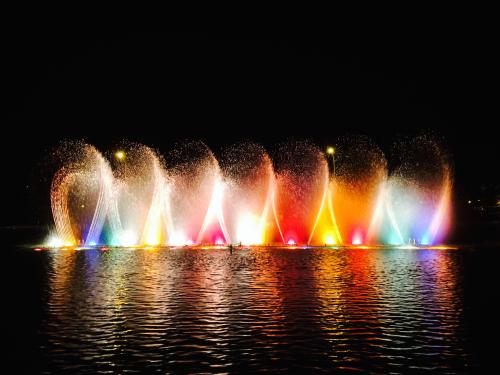How to Design a Musical Water Fountain
- Conceptualization and Planning
1.1 Define the Purpose and Location:
Decide the primary purpose of the fountain: is it for a public park, a commercial space, or a private garden?
Choose an appropriate location that complements the surrounding environment and can accommodate the necessary infrastructure.
1.2 Design Theme and Aesthetics:
Select a theme for your fountain. It could be modern, classical, natural, or abstract.
Consider the materials to be used (e.g., stone, metal, glass) and the overall aesthetic appeal.
- Technical Design and Components
2.1 Water Flow and Pressure:
Design the water flow patterns, such as jets, cascades, or mist.
Calculate the required water pressure and flow rate. This involves determining the height and trajectory of the water jets.
2.2 Pump System:
Choose suitable water pumps that can handle the desired water flow and pressure. Submersible pumps are often preferred for their quiet operation.
Install a filtration system to keep the water clean and prevent clogging of the nozzles.
2.3 Nozzles and Jets:
Select different types of nozzles to create varied water effects. Common types include foam jets, laminar flow nozzles, and geysers.
Ensure the nozzles are adjustable to control the direction and height of the water streams.
2.4 Lighting:
Integrate waterproof LED lights to enhance the visual impact of the fountain, especially at night.
Use color-changing lights synchronized with the music to create dynamic light shows.
- Musical Integration
3.1 Sound System:
Install high-quality outdoor speakers around the fountain area to ensure clear and immersive sound.
Ensure the sound system is weatherproof and strategically placed for optimal audio coverage.
3.2 Music Selection and Synchronization:
Choose a variety of music tracks that can be synchronized with the water movements and lighting.
Use specialized software to program the fountain’s choreography, aligning the water jets and lights with the beats and tempo of the music.
3.3 Control System:
Implement a central control system to manage the water pumps, lights, and sound system.
Use programmable logic controllers (PLCs) or a computer-based system to automate the fountain’s operation.
- Construction and Installation
4.1 Structural Foundation:
Ensure a solid foundation is laid to support the weight of the fountain and its components.
Consider waterproofing measures to prevent leaks and water damage.
4.2 Plumbing and Electrical Work:
Install the plumbing system, including pipes, valves, and connectors, to manage water flow.
Set up the electrical wiring for the pumps, lights, and sound system, adhering to safety standards.
4.3 Testing and Calibration:
Conduct thorough testing of the water jets, lighting, and sound system.
Fine-tune the synchronization between the water, lights, and music to ensure a seamless performance.
- Maintenance and Upkeep
5.1 Regular Cleaning:
Schedule routine cleaning of the fountain’s nozzles, filters, and basin to prevent buildup and ensure smooth operation.
5.2 System Checks:
Perform regular checks on the pumps, lights, and sound system to identify and address any issues promptly.
5.3 Seasonal Adjustments:
Make adjustments for seasonal changes, such as winterizing the fountain to prevent damage from freezing temperatures.
Conclusion
Designing a musical water fountain is a multifaceted project that requires careful planning, technical expertise, and artistic vision. By following these steps, you can create a captivating and harmonious water feature that delights audiences with its combination of water, light, and music. Whether it’s for a public space or a private garden, a well-designed musical fountain can be a mesmerizing centerpiece that enhances the ambiance and charm of its surroundings.

